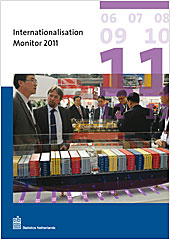Internationalisation Monitor 2011


Economic globalisation is characterised by increasing international trade, foreign investment and international outsourcing. For the Netherlands, this concerns activities by Dutch multinational firms abroad as well as foreign enterprises in the Netherlands. Not only do these cross-border activities have important economic consequences, they also raise a number of questions with respect to employment: does outsourcing reduce employment? How many jobs are created by incoming investment? If employers start importing products from emerging markets like China and India, how will this affect individual employees’ wages, and how do these effects differ from those of trading relations with traditional partners like the EU and the US?
This fourth edition of the Internationalisation Monitor describes the recent developments in international trade in goods and in services, outsourcing, foreign direct investment, international labour migration, and traffic and transport in the Netherlands. In addition, a set of focused analytical chapters provides in-depth analyses of how these globalisation trends affect employment.
Some important findings in this edition are:- The share of imports coming from BRIC countries quadrupled since 1996 from 4 to 16 percent in 2010, making China the third most important source of Dutch imports.
- One in ten firms in the Netherlands is active in international trade. The top 1 percent of traders generated 74 percent of Dutch imports and 71 percent of exports in 2008.
- In 2009, 1 percent of companies in the Netherlands were foreign-owned. They generated more than a quarter of the added value, one-sixth of employment and nearly a third of turnover of the private sector.
Internationalisation Monitor 2011
Downloads
- PDF - 2011-m21-pub